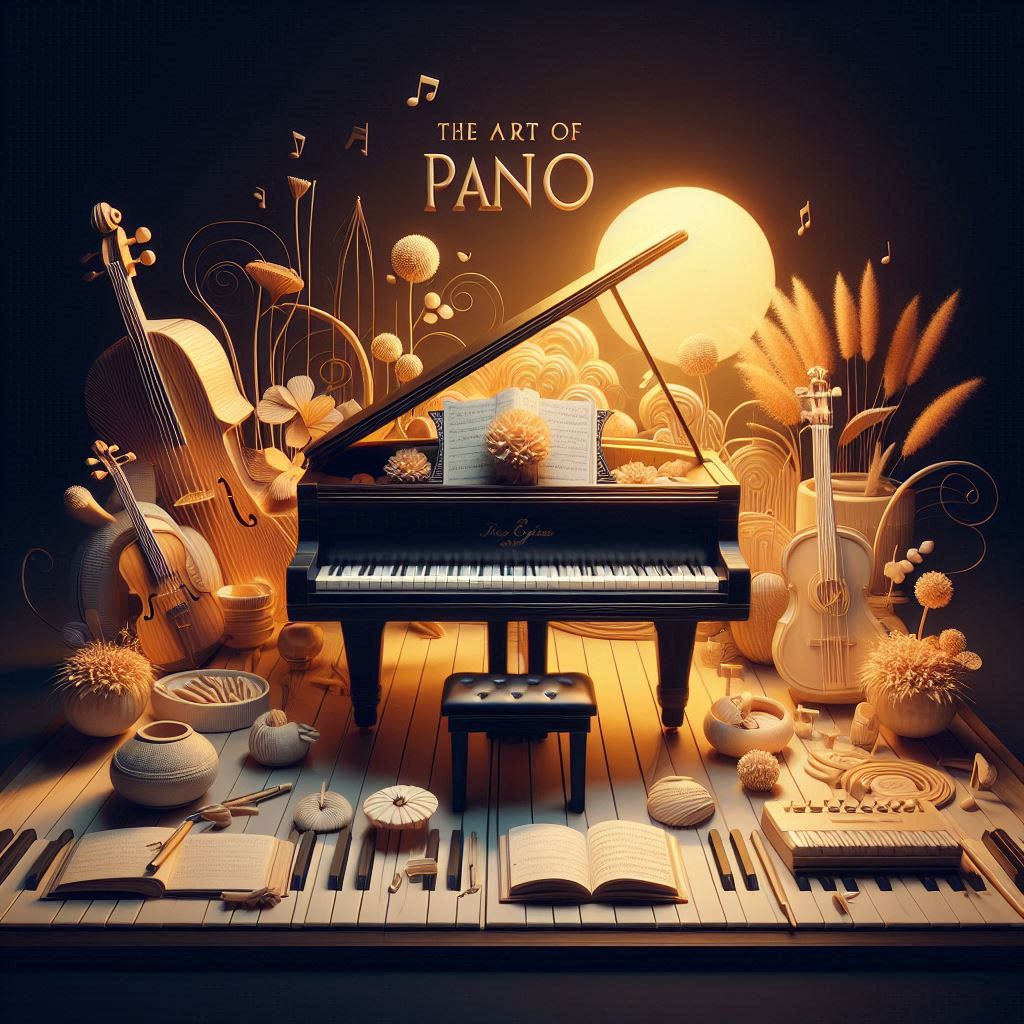Introduction
Jazz piano is a vibrant and expressive style of playing that combines technical proficiency with creative improvisation. Whether you’re a classical pianist looking to expand your repertoire or a beginner eager to dive into jazz, this guide will help you understand the fundamentals and develop your jazz piano skills.
How to Play Jazz on the Piano
Understanding the Basics of Jazz Piano
History and Influences
Jazz music originated in the early 20th century, blending African American musical traditions with European harmonic structures. Influences include blues, ragtime, and gospel, creating a rich, diverse genre.
Jazz Characteristics
Key characteristics of jazz include swing rhythms, syncopation, and improvisation. Understanding these elements is crucial for developing a jazz piano style.
Essential Jazz Piano Techniques
Chord Voicings
Jazz chords often feature complex voicings with added tensions (like 7ths, 9ths, 11ths, and 13ths). Learn to play these chords in various inversions to create smooth, melodic progressions.
Swing Rhythm
Swing rhythm is essential in jazz. Practice playing with a swing feel, where the eighth notes are played in a long-short pattern, giving the music its characteristic “lilt.”
Walking Bass Lines
A walking bass line provides a steady, rhythmic foundation. Practice playing bass lines with your left hand while comping (accompanying) chords with your right hand.
Improvisation Techniques
Scales and Modes
Familiarize yourself with scales and modes commonly used in jazz, such as the major scale, minor scale, blues scale, and modes like Dorian and Mixolydian. These will form the basis of your improvisation.
Chord-Scale Relationships
Understand the relationship between chords and scales. For example, over a C7 chord, you might use a Mixolydian scale (C D E F G A Bb) to create melodic lines.
Motivic Development
Develop motifs or short musical ideas and vary them throughout your improvisation. This technique helps create coherence and structure in your solos.
Learning Jazz Standards
Importance of Standards
Jazz standards are well-known songs that form the core repertoire for jazz musicians. Learning these tunes helps you understand common chord progressions and forms.
Popular Jazz Standards
Start with accessible standards like “Autumn Leaves,” “Blue Monk,” and “All of Me.” These tunes have straightforward structures and are great for beginners.
Analyzing and Memorizing
Analyze the chord progressions and form of each standard. Practice memorizing the changes and playing them in different keys to develop flexibility.
Developing Your Jazz Repertoire
Building a Diverse Set
Include a mix of ballads, blues, and up-tempo tunes in your repertoire. This variety will prepare you for different performance situations and improve your overall musicianship.
Transcribing Solos
Transcribing solos by famous jazz pianists helps you internalize their phrasing, rhythms, and harmonic ideas. Start with solos by artists like Bill Evans, Thelonious Monk, and Oscar Peterson.
Creating Arrangements
Learn to create your arrangements of jazz standards. Experiment with different chord voicings, rhythms, and introductions to make each piece your own.
Practicing Effectively
Structured Practice Routine
Create a structured practice routine that includes technical exercises, improvisation, and repertoire. Dedicate time to each area to ensure balanced development.
Using a Metronome
Practice with a metronome to develop a solid sense of time. Jazz often features complex rhythms, so staying in time is crucial.
Jamming with Others
Play with other musicians as much as possible. Jamming helps you apply what you’ve learned, develop your listening skills, and adapt to different playing styles.
Exploring Different Jazz Styles
Bebop
Bebop is characterized by fast tempos, intricate melodies, and advanced harmonic structures. Study pianists like Bud Powell and Charlie Parker to get a feel for this style.
Cool Jazz
Cool jazz features more relaxed tempos and smoother melodies. Explore the work of artists like Miles Davis and Dave Brubeck for inspiration.
Modal Jazz
Modal jazz focuses on improvisation over static harmonies or modes. Listen to albums like Miles Davis’s “Kind of Blue” and study the work of pianists like Bill Evans.
Latin Jazz
Latin jazz blends jazz with Latin American rhythms and styles. Explore the music of artists like Tito Puente and Antonio Carlos Jobim to understand this vibrant style.
Incorporating Technology
Learning Apps
Use learning apps like iReal Pro and Anytune to practice jazz standards and transcribe solos. These tools can help you slow down recordings and loop sections for detailed study.
Recording and Playback
Record your practice sessions to evaluate your progress. Listening back helps identify areas for improvement and track your development over time.
Online Lessons
Take advantage of online lessons and tutorials from experienced jazz pianists. Websites like Jazz Piano Online and YouTube channels offer valuable resources and insights.
FAQs
What are the essential skills for playing jazz piano? Essential skills include understanding chord voicings, swing rhythm, and improvisation techniques. Familiarity with jazz scales, modes, and standards is also crucial.
How can I start learning jazz piano as a beginner? Start by listening to jazz music and familiarizing yourself with its characteristics. Learn basic jazz chords, scales, and rhythms, and practice improvising over simple chord progressions.
What are some recommended jazz standards for beginners? Beginner-friendly jazz standards include “Autumn Leaves,” “Blue Monk,” and “All of Me.” These tunes have straightforward structures and are great for learning basic jazz concepts.
How important is improvisation in jazz piano? Improvisation is a fundamental aspect of jazz piano. It allows for personal expression and creativity, making each performance unique.
Can I learn jazz piano without a teacher? While having a teacher can provide valuable guidance, it’s possible to learn jazz piano on your own with dedication and the right resources. Use online tutorials, books, and learning apps to supplement your practice.
How often should I practice jazz piano? Consistency is key. Aim for daily practice, even if it’s just for 30 minutes. Focus on different aspects of jazz piano, such as technique, improvisation, and repertoire, to ensure balanced progress.
Conclusion
Playing jazz piano is a rewarding and dynamic pursuit that combines technical skills with creative expression. By understanding the basics, mastering essential techniques, and continually expanding your repertoire, you can develop into a proficient and expressive jazz pianist. Embrace the journey, practice regularly, and enjoy the rich world of jazz piano.



